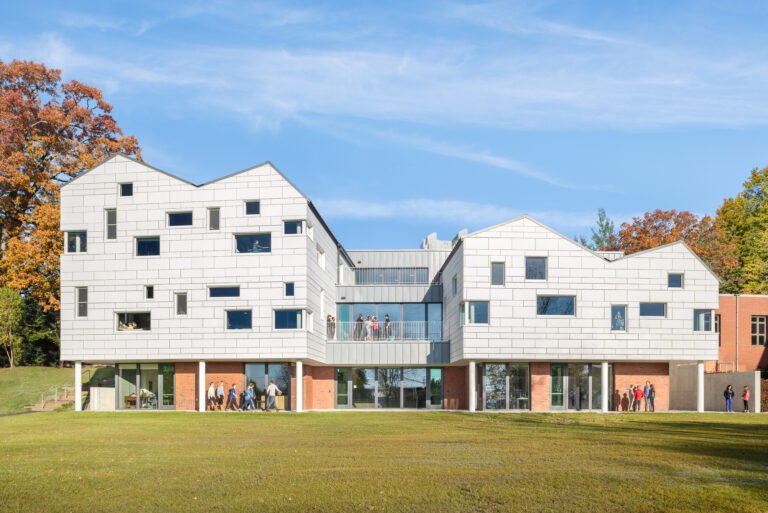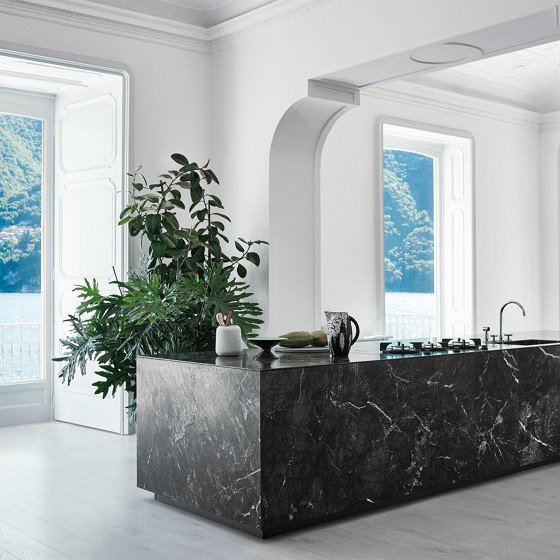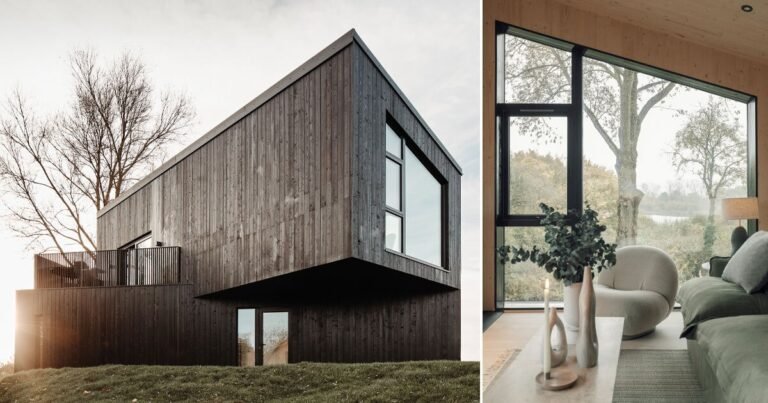This Small Modern Cabin in Oklahoma Is Perfectly Tucked Into the Woods
Slipped between trees on a three-and-a-half acre lot, this long, narrow, modern cabin was designed to preserve and highlight its natural surroundings. Architecture firm Far + Dang aimed to create a “white canvas in the woods” by cladding the minimalist weekend home in a contrasting white metal façade. “When you’re driving up the hill, you just get glimpses of this white thing behind it. You can’t even make out the shape,” says architect Bang Dang, founding partner at the Texas-based firm. “Then, when you make a slight [right turn,] you see this long structure in perspective.”
Designed for a Dallas-based couple—existing clients and former Manhattanites—the minimalist cabin is located about three and half hours away in southern Oklahoma’s Beavers Bend, a nature-filled area that’s become a popular getaway spot for many Dallas residents. While the majority of the nearby retreats are of the heavy, log cabin variety, the slim gable-roof home recalls modernist marvels thanks to its simple symmetrical shape. Between this, and the fact that it was inspired in part by artists such as Jan Imberi, it’s a considerable departure from its nearby neighbors.
“We were thinking what’s the opposite of that kind of suburban lifestyle that they’re living in day-to-day,” Far + Dang co-founding partner Rizwan Faruqui says. “So, not only are they going to a different environment, which is the woods, but also the actual building itself is completely different from what they are [usually surrounded by].”
Through its one-car garage, the cabin opens out into a courtyard with wood-slat pivot doors and an open skylight. “You’re driving three hours at least to get here, and [then] you’re on a dirt road,” Bang says. “The idea is, instead of coming straight into the cabin proper, you would come into a mediating space that helps you transition and forget all about [what you’ve left behind].”



